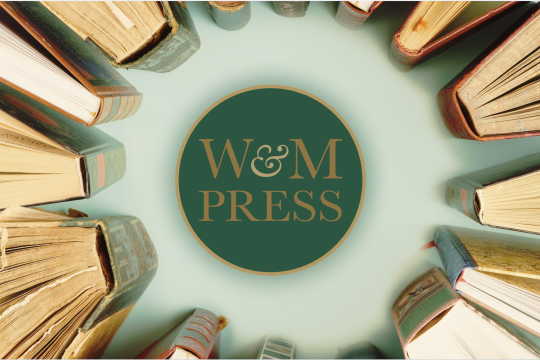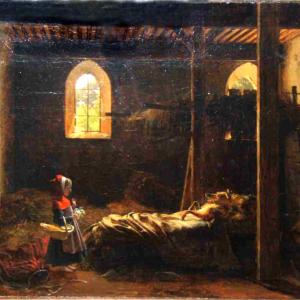Latest Post

Diving into Faculty Scholarship: Forthcoming W&M Press Publications
Posted October 23, 2025
In honor of International Open Access Week, we are excited to share details about two forthcoming publications from W&M Press.

Posted
William & Mary Libraries and the Dean of Arts & Sciences are pleased to provide funding to cover the registration costs for up to 5 faculty and graduate students interested in attending the Digital Humanities Summer Institute, June 5-9 (on-site at University of Victoria) and June 12-16, 2023 (online).

Posted
Take a minute each day during final exams to recharge with these activities at Swem! All events will take place in the first-floor lobby area unless otherwise noted.

Posted
Although National Thanksgivings were periodically proclaimed from Colonial times in America, Thanksgiving as a Holiday was not formally adopted until Abraham Lincoln declared a day of Thanksgiving in 1863.

Posted
Our faculty at William & Mary are making global contributions with their research. In our recent blog series, we interview faculty with recent publications for insight into their scholarship. Dr. Fiona Shen-Bayh, (Assistant Professor, Government and Data Science) recently published Undue Process: Persecution and Punishment in Autocratic Courts.

Posted
In this post, we introduce the newest member of our digital services team!

Posted
In this post, we introduce the newest member of the Special Collections staff, Afua Ferdnance!

Posted
Pumpkins are squash plants native to Americas and did not make an appearance in Europe until the early 1500’s.

Posted
Swem Library has carved out a space on our second floor for a comics/graphic novel collection! Located in the nook at the front of the building, this collection contains approximately 500 titles, although new ones will be added regularly.

Posted
In this post, we introduce W&M Libraries' new Development Associate, Daneen Resnick! Name Daneen Resnick Title Development Associate

Posted
Say hello to our newest institutional access citation management tool available to William & Mary faculty, staff and students – Zotero! Zotero is an open access citation management tool – which means it has always been free to use, however, starting now, William & Mary Libraries is funding institutional access to Zotero’s cloud storage.

Posted
Chris Howard (Professor of Government and Public Policy) recently published "Who Cares: The Social Safety Net in America."

Posted
Once upon a time, so all the stories go, there was a librarian and an English professor who wanted to not only save their students money on textbooks but also innovate their teaching. Luckily, the concept of open education was familiar to them both and they set out to create a curriculum that would support their teaching objectives and hopefully be easy on their students’ wallets.

Posted
Dr. Fiona Shen-Bayh, (Assistant Professor, Government and Data Science) recently published "Undue Process: Persecution and Punishment in Autocratic Courts."

Posted
Candice Benjes-Small, Head of Research and librarian to Film and Media Studies, spoke to Professor Liz Losh, about her recently published book, “Selfie democracy: The new digital politics of disruption and insurrection.”

Posted
W&M Libraries staff have been hard work over the summer months. A few of them were excited to share their favorite project with the W&M community. Paul Showalter, coordinator of instruction & assessment, shared about the workshops held by the research services team.

Posted
W&M Libraries staff have been hard work over the summer months. A few of them were excited to share their favorite project with the W&M community. Drea George, a multimedia specialist, shares on implementing a student training program that improves the Reeder Media Center’s service to the W&M community.

Posted
Stereoviews offer a great window into the world of popular culture from the 1860’s into the 19230’s.

Posted
The Public Domain or PD is expanding, admittedly at a rather slow rate (thanks, Sonny Bono!) but it is growing. 2020 marked a monumental year, for oh so many reasons, but for copyright and the public domain it meant that for the first time in a good long while, the expiry of copyright terms led to the expansion of the public domain. But what exactly is the Public Domain and why does it matter?

Posted
W&M Libraries staff have been hard at work over the summer months. A few of them were excited to share their favorite project. Meghan Bryant, head of special collections public services & instruction, shares about her partnership with Steve Prince, the Muscarelle Museum's director of engagement and distinguished artist in residence, and their plan to launch a workshop in the fall.

Posted
W&M Libraries staff have been hard work over the summer months. A few of them were excited to share their favorite project with the W&M community. Deborah Cornell, head of digital services, shares on leading a multi-year endeavor to build a new digital collections platform.